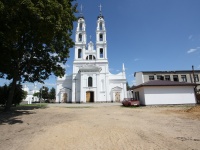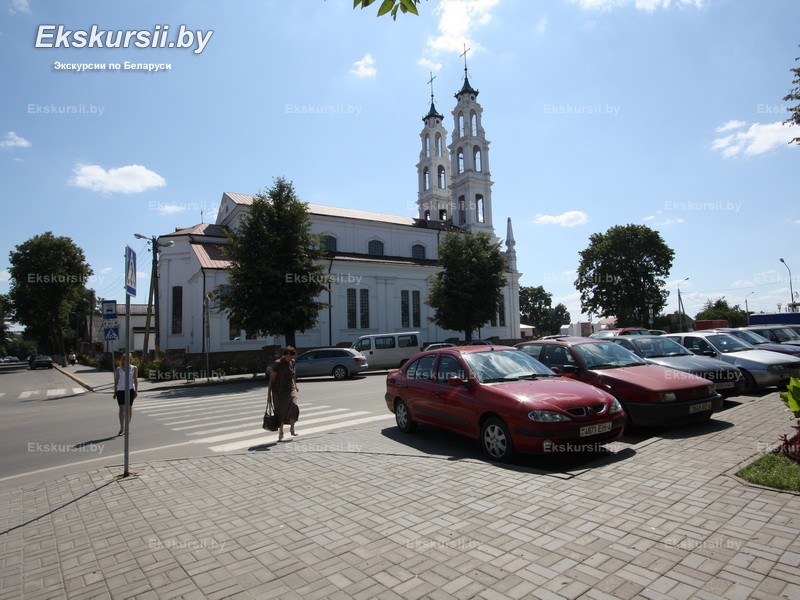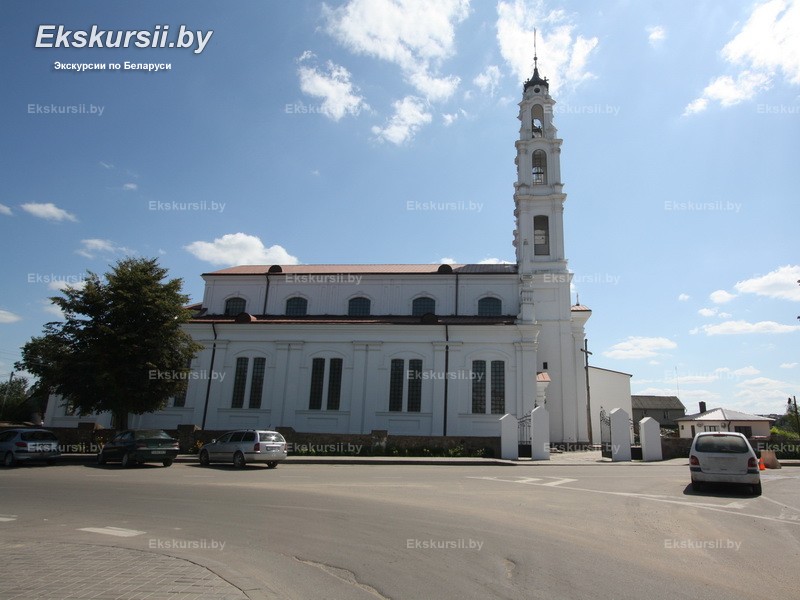- Home
- →
- Attractions
- →
- Church of St. Michael Archangel in Oshmiany
Church of St. Michael Archangel in Oshmiany
Church of St. Michael the Archangel is a Catholic church in the city of Ashmyany, Grodno Region, Belarus. It belongs to the Ashmyany Deanery of the Grodno Diocese. This architectural monument in the Neo-Baroque style was built between 1900 and 1910. Today, the church is one of the main attractions of Ashmyany, drawing tourists interested in the history and culture of Belarus.
History of the Parish in the 19th Century
In 1846, the administrator of the Ashmyany parish was Dean and Doctor of Philosophy Ambroży Parmanowski. In 1886, the parish priest was Kazimierz Sajkowski, who was awarded the Order of Saint Stanislaus (3rd class), a golden pectoral cross, and the Red Cross badge.
Construction of the New Church
The new building of St. Michael the Archangel Church was constructed between 1900 and 1910 based on a design by the renowned architect Wacław Michniewicz. It replaced an older church that had previously stood on the site. In 1907, the parish priest was Julian Eidziatowicz, with Edmund Petkiewicz serving as his vicar.
Closure and Restoration of the Church
In 1948, the church was closed, and its building was repurposed as a factory. However, in 1989, the church was returned to the Catholic community, after which a restoration process was carried out, restoring its original appearance.
Architectural Features of the Church
St. Michael the Archangel Church is a three-nave, twin-towered basilica with a pentagonal apse and side sacristies. Its architectural concept is based on a tiered volumetric-spatial composition. The main nave is covered with a gable roof, while the lower side naves have mono-pitched roofs. The interior space is vaulted with cylindrical arches, creating a majestic atmosphere.
Facade and Decorative Elements
The church facade is adorned with two tall, five-tiered tented towers, giving it a monumental appearance. The main entrance is decorated with an elegant triangular portico inscribed with "Te Deum Laudamus" ("We praise You, O God"), emphasizing the religious significance of this architectural masterpiece.




